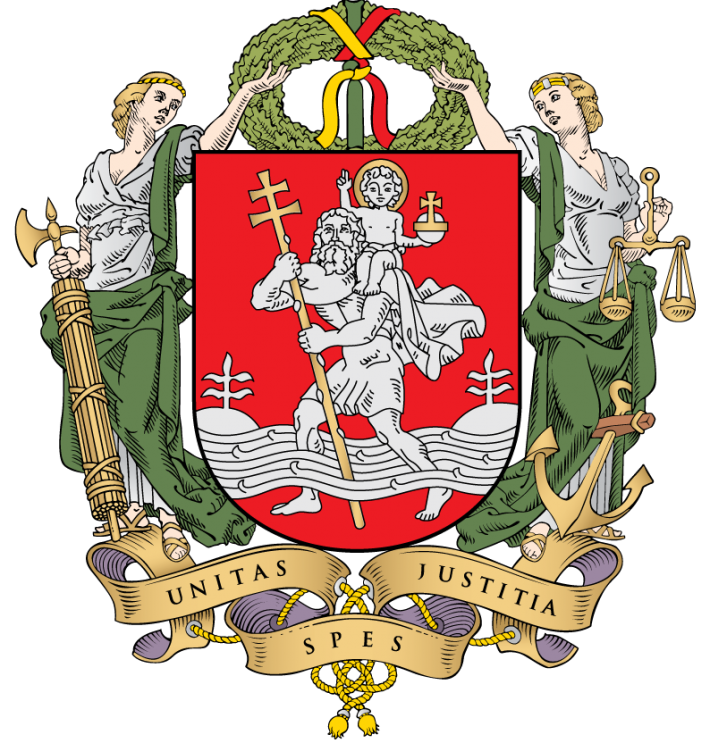Views: 101
 In 1695 the Trinitarians set up a community on the right bank of the River Neris just to the north of Vilnius. Therefore, the place is known as Trinapolis (a city of the Trinitarians)
In 1695 the Trinitarians set up a community on the right bank of the River Neris just to the north of Vilnius. Therefore, the place is known as Trinapolis (a city of the Trinitarians)
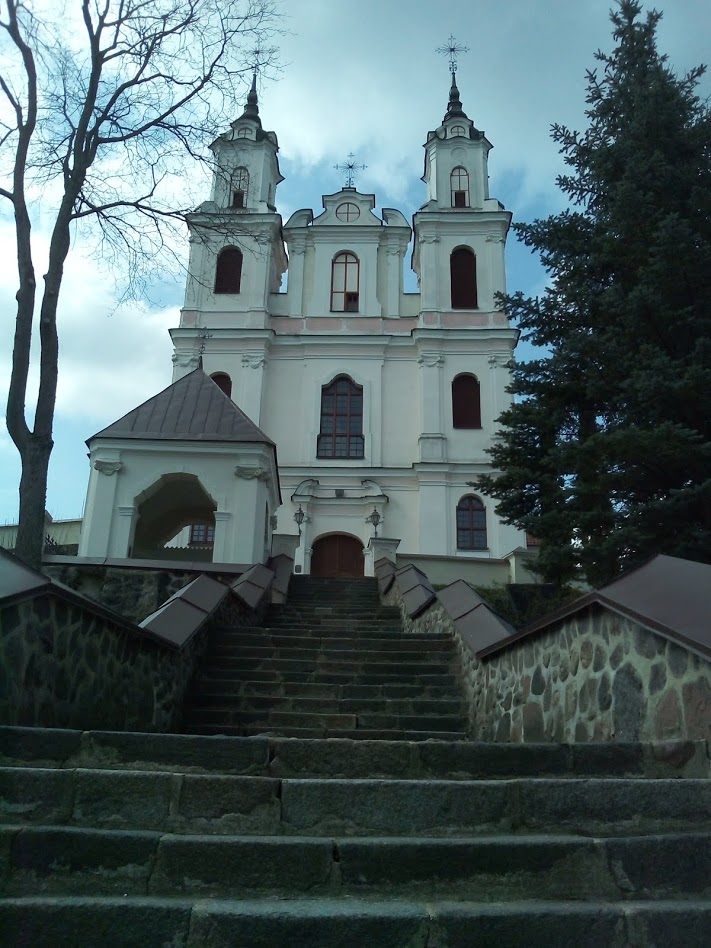 In 1750-1760 Trinapolis was reconstructed in the late Baroque style. It was a summer residence of Vilnius bishops
In 1750-1760 Trinapolis was reconstructed in the late Baroque style. It was a summer residence of Vilnius bishops
 In Soviet times the church was closed down. Today, the monastery is used as a retreat house by an order of nuns, and the church is not regularly open
In Soviet times the church was closed down. Today, the monastery is used as a retreat house by an order of nuns, and the church is not regularly open
All photos are copyrighted by Vladislav B. Sotirovic
© Vladislav B. Sotirovic 2022
RELATED POSTS
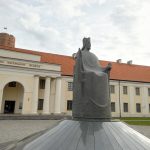
Originally, the Vilnius Lower Castle's jurisdictional court and administration was housed in this building during the 17th and 18th centuries. In the 18th century it was reconstructed into a weapons store-house and militarry baracks. Today, the museum holds the most important archaeological, historical, and ethnic cultural collections of Lithuania that cover Lithuania's history from the Stone Age to the present-day. In front of the building is a monument to King Mindaugas In 2003, a monument to King Mindaugas was erected in the square in front of the building of New Arsenal (today Lithuanian National Museum)In the 19th century, an entrance in the Classical style was biultAll photos are copyrighted by Vladislav B. Sotirovic© Vladislav B. Sotirovic 2018
Continue Reading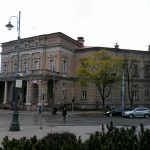
The Library of the Lithuanian Academy of Sciences was established in 1941 together with the Academy of Sciences, in the building of the former State Wróblewski LibraryBetween two world wars, State Wróblewski Library was one of the largest libraries in Vilnius. It was founded by lower Tadeusz Wróblewski. In 1941, the new Library inherited from it some 163.000 volumes, more than 35.000 manuscripts, large collections of numismatics, cartography, and artworksAfter WWII, the Library was supplemented by extensive collections from other libraries. Today, its stocks count more than 3.77 mln itemsAll photos are copyrighted by Vladislav B. Sotirovic© Vladislav B. Sotirovic 2020
Continue Reading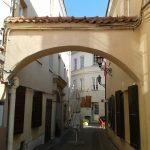
A building of Jewish Center of Culture and Information in the area of the Large Jewish Ghetto in 1941-1943. In this house a famous Vilnius resident Dr. Tzemach Shabad livedTzemach Shabad (1864-1935) was not only a good doctor, but a societal and community figure, and humanist as well. A monument (in 2007 erected) to him on the territory of WWII Large Jewish GhettoA plaque of a plan of the Jewish Ghetto in 1941-1943. There were Small and Large Jewish Ghettos existing from September 6th, 1941 to September 23rd, 1943. Today, September 23rd is the National Memorial Day for the Holocaust/Genocide of the Lithuanian Jews All photos are copyrighted by Vladislav B. Sotirovic© Vladislav B. Sotirovic 2019
Continue Reading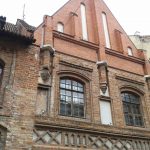
There were formerly two separate Gothic houses. Both were built before 1514 and belonged to clergy, goldsmiths, a surgeon and pharmacists. During the 1655-1661 war with Russia they were damaged and handed over to the capitulary of the Cathedral, which had them rebuilt in the Baroque styleThe building were severely damaged during the Second World War and renovated in 1957-1960Decorative Gothic façades and cylindrical vaults in the basement and on the ground floor have been reconstructed All photos are copyrighted by Vladislav B. Sotirovic© Vladislav B. Sotirovic 2019
Continue Reading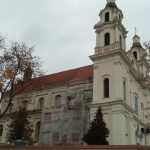
The church is an elegant late Baroque monument built-in 1702-1730. It is made even more attractive by an asymmetrical monastery ensemble in 1713-1730The towers date from the mid-18th century. They end in rococo domes with lanterns Both the church and the monastery belonged to the Jesuit Order. The monastery was intended for the Jesuit monks with 10 years of service experience seeking to become professed Jesiuts, i.e., to make the last ceremonial vowes All photos are copyrighted by Vladislav B. Sotirovic© Vladislav B. Sotirovic 2019
Continue Reading
Trakų St. finishes where it meets Pylimo St, which runs along the course of the old city wall. There used to be a gate here, which was pulled down together with the wall at the very beginning of the 19th century. In the niche of the Umiastowski estate (Trakų St. 2) there is a Statue of "The City Guard" (1973) In Trakų Street, there is the Church of Our Lady of the Assumption that was founded here by the noble Goštautas family in 1387, the same year as Lithuania became converted to Christianity. However, it is believed that the church with the monastery existed even earlierOne of courtyards of the buildings in Trakų StreetAll photos are copyrighted by Vladislav B. Sotirovic© Vladislav B. Sotirovic 2020
Continue Reading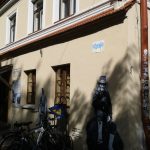
The Galera Gallery in the Užupis Art Incubator also operates there, where exhibitions of various kinds of art are organizedGalera of Užupis is an Alternative art gallery. That is a place similar to the former Christiana district in Copenhagen in DenmarkThe Užupis district and its Art Incubator are separated from the Old Town in Vilnius on three sides by the River Vilnia, and by a high hill on the fourth sideAll photos are copyrighted by Vladislav B. Sotirovic© Vladislav B. Sotirovic 2020
Continue Reading
After being baptized in 1251 into the Roman Catholicism in 1251, Grand Duke Mindaugas built the first cathedral in Vilnius on the site of the present-day Cathedral Basilica (Cathedral of St. Stanislaus and St. Vladislaus). Before that, in pagan times an altar, a sacred fire or even a Perkūnas sanctuary was located on the site of today's Cathedral Basilica The creation of the Lithuanian state started as late as the 13th century. Its first outstanding ruler Mindaugas was baptized in 1251 and crowned King of Lithuania on July 6th, 1253. Today, July 6th is a national holiday of Lithuanian statehood It is assumed that it was Mindaugas who built the first Cathedral in Vilnius. Traces of the original Cathedral incorporating Romanesque style features have been discovered in the vaults of the present Cathedral. After Mindaugas's death, the Christian (Roman Catholic) Cathedral was turned into a place of pagan worship. The author ...
Continue Reading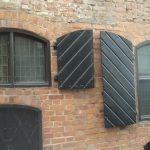
End of Stiklų St. on the intersection with Dominikonų St. and Šv. Ignoto St. in the Old Town in VilniusIn Stiklų St. No. 4 stands a typical building with a so-called Courtyard of the Printing House. Its history goes back to the 15th century. In the 16th century it held the Mamonichi printing house. A Gothic building in the courtyard with the exterior and fragments of the interior was reconstructed in 1974. In front of it a sculpture of "The Chronicler" is erected in 1973Wall (right) of the former Russian Orthodox church in Stiklų St. No. 17All photos are copyrighted by Vladislav B. Sotirovic© Vladislav B. Sotirovic 2020
Continue Reading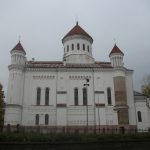
The church is endowed by Juliana, the wife of Lithuania's Grand Duke Algirdas (1345-1377) and mother of Lithuania's and Poland's ruler Jogaila. Grand Duke of Lithuania Jogaila baptized Lithuania in 1387. She was buried in the churchFragments of Gothic masonry have survived in the bottom part and in some segments up to the top. The present façades and the cupola imitate Georgian medieval architectureIn 1415 the church was transformed into a cathedral. In 1511-1522 it was reconstructed by Prince Constantine Ostrogsky. In 1516 Helen (a Russian Orthodox), wife of Alexander Jagiellon (Polish King and Lithuanian Grand Duke) was buried there. In 1609 the cathedral was given to the Uniates (Greek Catholics). In 1865-1868 it rendered its present appearance, and it began to function as a church again All photos are copyrighted by Vladislav B. Sotirovic© Vladislav B. Sotirovic 2018
Continue Reading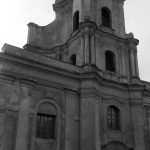
The Augustines established themselves on this site in Vilnius Old Town after 1661. The monastery date from the late 18th centuryIn 1833-1842 the monastery housed the Vilnius Spiritual Academy. In 1859 it was converted into a Russian Orthodox Church of St. AndrewIn 1918 the church was returned to the Roman Catholics and renovated. After WWII the interior was destroyed during the installation of a ferroconcrete ceiling; the church was used as a warehouse in the Soviet timeAll photos are copyrighted by Vladislav B. Sotirovic© Vladislav B. Sotirovic 2019
Continue Reading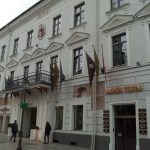
Polish King Jan Sobieski, Russian Emperor Alexander I and French Emperor Napoleon I visited the mansion on various occasions. The building was reconstructed in 1839-1841. The present façade is ClassicalA Florentine artist Michelangelo Palloni, was invited from Italy in 1674 to work at Pažaislis monastery and church near Kaunas, and Mykolas Kazimieras Pacas then commissioned him to paint frescoes for of this estate.Unfortunately, none of the original interior, which also included rich stucco work, remainsAll photos are copyrighted by Vladislav B. Sotirovic© Vladislav B. Sotirovic 2022
Continue Reading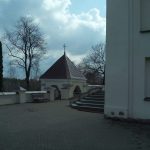
The church and Vilnius Calvary are an expression of gratitude to God for the liberation in 1661 of Lithuania from the Russian EmpireIt is the second oldest and once the most famous Calvary in Lithuania, revered by pilgrims and processions of believersThe late Baroque church was rebuilt in the 18th century. The central nave is decorated with 18th century mural paintings, the sacristy - with 18th century stucco relief worksAll photos are copyrighted by Vladislav B. Sotirovic© Vladislav B. Sotirovic 2021
Continue Reading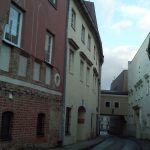
A former Gothic façade that was uncovered at Karmelitų Str. around Rūdninkų Square in the Old Town of VilniusThe back-side façade from the inner courtyardThe back-side façade from the inner courtyard. The house is located on the territory of WWII Large Jewish GhettoAll photos are copyrighted by Vladislav B. Sotirovic© Vladislav B. Sotirovic 2020
Continue Reading
Martynas Mažvydas National Library of Lithuania is a national cultural institution open to all users, active in the areas of dissemination of information, culture, science, and education, performing library activities and ensuring implementation of the national information policy falling within its competence The mission of the library is to be the Lithuanian space of knowledge-creating value for the public The vision of the library: to become an integral part of the state's information policy, culture, education, science, and economic progressAll photos are copyrighted by Vladislav B. Sotirovic© Vladislav B. Sotirovic 2019
Continue Reading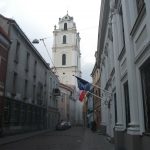
In this street, it was used to be a market place where it meets Pilies street. The first Town Hall is also believed to have stood on this spot Pharmacy house in St. John St. No. 5. Georg Schulz's pharmacy operated in this house since 1639. During the war in 1655, the house was burned down. In 1781, pharmacist Koszyk acquired the ruined building and reconstructed it The Pac estate. Since 1628, the building belonged to the Pac magnate family of the Grand Duchy of Lithuania. In 1783, the dilapidated building was bought, renovated and decorated by the Chancellor of the Grand Duchy of Lithuania - Alexander Michael Sapieha. Currently, the building belongs to the Polish Embassy All photos are copyrighted by Vladislav B. Sotirovic© Vladislav B. Sotirovic 2020
Continue Reading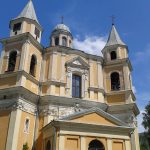
The interior sculptural décor was created by Pietro Perti (Italian master) in 1700-1705. Twin towers were built on in the 18th century. It was built by the efforts of Casimir Sapieha the Younger (1637-1720) in 1694-1717 On the façade frieze two Christian soldiers taken into captivity by the Muslims are represented. The main goal of the Trinitarian Order was returning such captives to their homelands The church has an impressive cupola (dome), the interior is adorned with stucco relief works and sculptures - a large part of them is survived. The church is a "sister" to the Church of St. Peter and St Paul in Vilnius (Antakalnis)All photos are copyrighted by Vladislav B. Sotirovic© Vladislav B. Sotirovic 2019
Continue Reading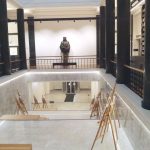
One of the meeting rooms in the library for public lectures, book presentations and discussionsOne of the exibition hallsOne of the Reading RoomsAll photos are copyrighted by Vladislav B. Sotirovic© Vladislav B. Sotirovic 2020
Continue Reading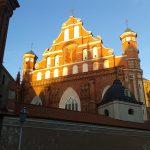
The main altar with Late Baroque forms, made from dark woodInterior of Church of St. Francis and St. BernardineWhile restoring the church, one of the largest mural paintings from the Late Gothic and Renaissance periods was discovered. They depict scenes from the Bible, Franciscan legends and symbolic imagesAll photos are copyrighted by Vladislav B. Sotirovic© Vladislav B. Sotirovic 2020
Continue Reading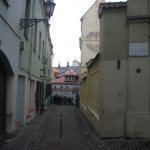
An idea to designate this small street a memorial site to writers began to be implemented in 2008Literatų Street No. 5: The Piasecki house built in the late 18th century. In 1823, having arrived from Kaunas, Adam Mickiewicz resided here at the invitation of the parents of his friend Kazimierz Piasecki. On the pediment of the entry arch a memorial plaque with a Polish inscription is set up; plaques with Lithuanian and Russian inscriptions are set below on both sides of the arch In the 19th century there were many bookshops on this street, hence its nameAll photos are copyrighted by Vladislav B. Sotirovic© Vladislav B. Sotirovic 2019
Continue ReadingLithuanian National Museum (New Arsenal) and a Monument to King Mindaugas
The Wroblewski Library of the Lithuanian Academy of Sciences
Jewish Quarter (I)
Gothic Brick Architecture in Vilnius: Pilies (Castle) Str.
Church of St. Archangel Raphael
Trakų Street in Vilnius
Užupis Art Incubator (2)
King Mindaugas Monument
Stiklų St. in the Old Town in Vilnius
Russian Orthodox Church of the Blessed Mother of God
Church of Blessed Mary the Comforter and the Augustine Monastery
The Pac Mansion
The Calvary Church of the Discovery of the Holy Cross
House-Monument with Gothic Façade
National Martynas Mažvydas Library
St. John Steet in Vilnius
Church of Our Lord Jesus and the Trinitarian Monastery
Martynas Mažvydas National Library of Lithuania (Inside)
Church of St. Francis and St. Bernardine (Interior)
Literatų Street



